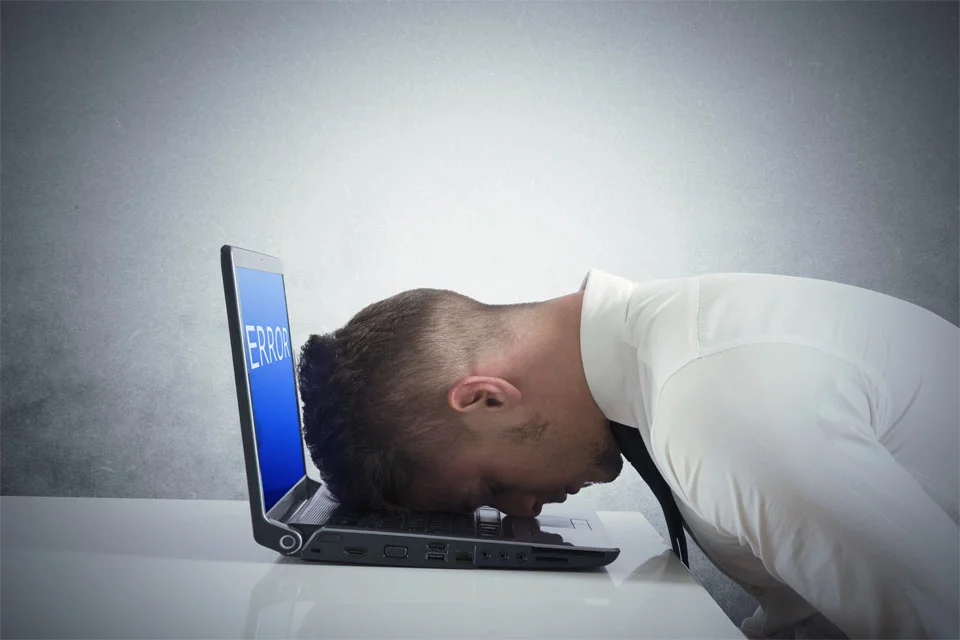Getting a PAGE_FAULT_IN_NONPAGED_AREA error in Windows is pretty annoying. Usually, the problem comes as a Blue Screen of Death which disrupts your work momentum and sometimes shows up to indicate the hidden problems in your hardware or software. Let us now look in detail at what this error means, its causes, and ways to get rid of it.
What is Windows Error PAGE FAULT IN NONPAGED AREA?
A computer relies on two primary types of memory storage: Random Access Memory (RAM) and the hard drive. There are other types of memory, but these two are the most suitable in describing this issue. The hard drive provides permanent storage in that data is preserved even when the system is off. RAM, however, is temporary as it keeps data only when the computer is on.
When RAM is saturated with active processes, information from less important tasks is stored temporarily in a page file, which is on the hard drive. The page file is overflow storage, and RAM uses it to dump information when system tasks are more than its capacity. Consequently, there is a constant transfer of information between RAM and the page file.
The non-paged space emphasized in the PAGE FAULT IN NONPAGED AREA error is RAM space that must at all times be reserved for system operation. The memory cannot be relocated from this address to the hard drive, unlike page file data. When the system is unable to load required memory from this area, it generates the error. Corruption of the hard drive or hardware failure predominantly is the cause of this error.

Read about similar Windows Errors:
How to Fix the PAGE FAULT IN NONPAGED AREA Error on Windows 10/11
Solution #1: Check Your Hard Drive Disk for Errors
Issues related to the hard drive usually cause this error. The disk check will run and find the problems that may be caused by corrupted files or bad sectors.
- Open the Command Prompt as an administrator. Press Win + X and select either “Command Prompt (Admin)” or “Windows Terminal (Admin).”
- Type the command:
chkdsk /f /r. Press Enter. - You’ll be prompted to schedule the scan on your next restart. Type
Y, restart your computer, and let the process complete.
This scan checks for file integrity and attempts to repair any issues it finds on your hard drive.
Solution #2: Run a Memory Diagnosis
Faulty RAM modules are another common cause of this error. Windows includes a built-in tool to test your memory.
- Press Win + R to open the Run dialog box.
- Type
mdsched.exeand hit Enter. - You can choose to immediately reboot your computer or schedule the test for the next reboot. It will boot into the Memory Diagnostic Tool and start scanning. After the scan, any detected problems will be displayed.
- Replace any faulty RAM as detected during the above process.
Solution #3: Update Drivers
The driver update or incompatibility also causes this error. All drivers should be updated to maintain system stability.
- Open the Device Manager by pressing Win + X and selecting it from the list.
- Locate devices with a yellow exclamation mark (indicating driver issues).
- Right-click on the device and select Update Driver. Choose the option to search for updated driver software automatically.
- Alternatively, download drivers directly from the manufacturer’s website for the most accurate version.
Easier Ways to Update Drivers Consider, for updating all your drivers with ease, a tool such as Outbyte Driver Updater; this tool automates the process of detection and installa tion of updated drivers rather than missing/outdated ones.
Read also about other popular Graphic cards Drivers:
Addressing the PAGE FAULT IN NONPAGED AREA error promptly can save you from repeated system crashes and potential hardware damage. Use the solutions outlined above to restore your system’s stability effectively. If you encounter persistent issues, tools like Outbyte PC Repair can optimize your system and resolve hidden problems.
FAQs
1: What is the 0xc1900107 error code?
The code largely appears while running a Windows update; hence, it tends to associate with some file that had remained from an earlier installation. This may require running the disk clean-up to solve it.
2: Does an antivirus result in such errors?
Yeah, sometimes certain antivirus conflicts with your system processes. Disabling the antivirus installed will, temporarily, also help ascertain whether it’s the actual problem.
3: How would I tell if my RAM is faulty?
Run the Windows Memory Diagnostic tool-this is a great way to test your RAM. Issues detected warrant replacing the module in fault.
4: Can this error damage my computer?
While the error in and of itself doesn’t damage hardware, the conditions leading to it indicate deeper problems that one should look into for general system health and stability.
5: How can I avoid this in the future?
Updating drivers regularly, maintaining your hard drive, and running system checks can help prevent this error.




